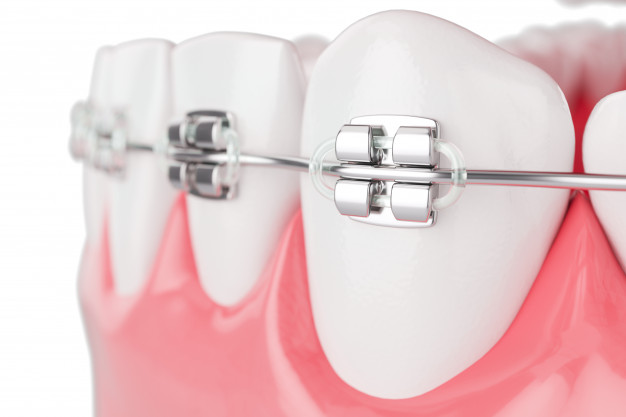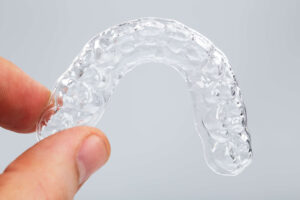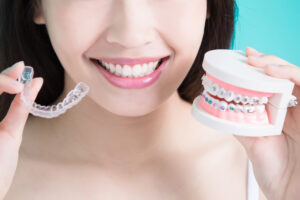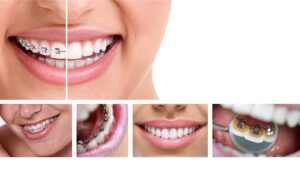About lingual braces | Before and after | Working mechanism | Teeth movement | Pros and cons | Good Candidate | Cost in UK | Lingual braces vs. Invisalign | How to clean | Lisping
Incognito® Lingual Braces aka hidden braces treatment at Queen Anne Street, London
At Invis London, our specialist orthodontist Dr. Bronskly uses the brand Incognito® Lingual Braces designed by 3M. Incognito® allows us to customize your teeth straightening treatment and get you a beautiful smile.
Book a free, no obligation consultation with Dr. Bronskly today at Invis London clinic in Queen Anne Street and we’ll let you know if you’re a good candidate for Incognito® lingual braces.
The number of braces available can confuse anyone, so here is all you need to know about lingual braces treatment in London, including advantages, disadvantages, cost, and other details.
What are lingual braces?
Braces treatment is all about straightening teeth to enhance appearance. Traditional metal braces are great for the purpose, but the visibility of wire and brackets is a big demotivator for young and adults. Lingual braces, although it also has the same components as traditional braces, are placed on the back of your teeth, on the tongue side (lingual) side of the teeth. So, it remains invisible to onlookers.
Lingual braces are the best possible alternative to traditional metal braces to correct even the severe cases of malocclusion, that too with less visibility. It gives you the freedom to go in public with confidence and continue doing what you love to do, and even play wind instruments without hurdles.
Unlike other clear braces options, like ceramic braces and Invisalign aligners, lingual braces are highly effective in correcting severe dental problems like rotations, gaps, crowding, and some bite issues. As compared to traditional metal braces, lingual braces help you maintain oral hygiene with comfort as these are placed on the lingual side. Even if there is some discoloration, it will remain invisible.
Lingual braces, undoubtedly, outperform clear braces in terms of teeth straightening results, but for bite issues, it might not be the best option. Since lingual braces placement requires special training, you have to consult only a qualified orthodontist who could place wires and brackets with precision. Dental hygiene affects the treatment duration, so follow teeth cleaning instruction religiously to get the desired result in stipulated time with comfort.
Before and After Gallery
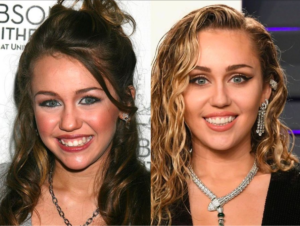
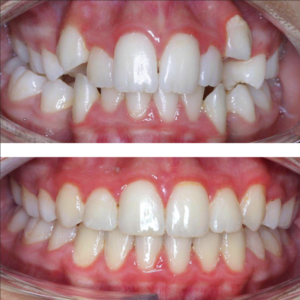
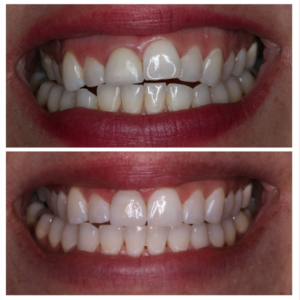
How Do Lingual Braces Work?
Technically, lingual braces use the same biomechanics of dental symmetry as traditional braces to generate subtle force to move teeth as per the treatment plan. The lingual braces treatment at Invis London, one of the most popular dental clinics with a track record of delivering highly accurate teeth straightening results, begins with transparent discussion followed by a thorough examination of the dental system using x-rays and scanning tools. Once eligibility is decided and approval received, expert dental professionals take the impression of the dental system to custom-design brackets. Lingual braces expert, Dr. Daniel Bronsky, will fix brackets and place wires on the back of your teeth.
Since the procedure involves the meticulous placing of brackets to cause minimum speech impediment, the specialist might prepare your teeth for better holding. Once done, you have to maintain your regular oral care regimen and visit your orthodontist every six to eight weeks so that he could make necessary adjustments to achieve desired teeth straightening results in time. Lingual braces are known for correcting even difficult orthodontic cases with discreteness as they also consist of two main components: brackets and wires.
Brackets
Depending on your dental complexity level and straightening expectation, your orthodontist will attach brackets on each tooth or to your front six to eight teeth. Made of stainless steel or gold alloy, these brackets are fixed using special dental cementing material so that they remain fixed on teeth to hold wires firmly. At the end of the treatment, your orthodontist will remove cementing material without causing damage to your natural enamel.
Archwires
The goal is to reposition teeth using subtle force, so metal archwires are attached to brackets using metal ligatures or elastic bands. Depending on the brand in use, its brackets could consist of clips to hold archwires in the right place, these are also called self-ligating brackets. Once placed rightly, archwires will start moving teeth gradually as it will return to original shape. Depending on your treatment plan, your orthodontist will change archwires several times during the teeth straightening journey.
How Do Teeth Move?
Once brackets and archwires are attached, it will start exerting pressure on teeth, thus making the periodontal membrane stretch or compress. It will loosen teeth and new bone will start forming around the teeth in the new position. The teeth movement process- also called remodeling- takes time to stabilize. To avoid relapse of teeth to their original position, orthodontists might recommend wearing retainers for some months. It is necessary for you to wear them for a maximum of hours daily to keep your smile straight forever.
Moving teeth is a highly complex exercise and each case is unique in its own way, so you should consult only a highly experienced orthodontist, like Dr. Daniel Bronsky of Invis London, who could help you get a better smile effortlessly. Unlike clear aligners, lingual braces give full control over the treatment plan to orthodontists, so a trained lingual braces expert will achieve accurate repositioning by making necessary adjustments during treatment.
Whatever is your dental complexity, whether overcrowding, crooked teeth, impacted teeth, or bite issues, an experienced orthodontist can correct all using lingual braces. You will see smile transformation happening in just a few weeks but follow oral care instructions religiously to get desired results with comfort.
Pros
Most people start thinking about traditional metal braces first when they plan teeth straightening orthodontic treatment. But, the moment the dental professional starts elaborating how teeth could be straightening discreetly with lingual braces with comfort, they start liking the idea. Here are some of the advantages of lingual braces treatment to make smile better:
The discreetness
You might be postponing your teeth straightening goal just because of the visibility of the wires and brackets. Unlike traditional metal braces, brackets and wires are placed on the lingual side of teeth so it gives you the much-needed discreteness to live life confidently. For fashion-conscious teenagers, it is an excellent option as this gives you straight teeth without making you self-conscious of the appearance. You can correct your dental irregularities with lingual braces, just like Miley Cyrus did to improve her smile. The discreteness of this treatment makes it a hot favorite of celebrities and professionals as it rarely affects the natural appearance and speech.
More Flexibility
Lingual braces treatment is designed to offer more flexibility, in terms of selected application on some teeth only. Depending on your dental complexity and expectation, it can be placed on all teeth or only six to eight front teeth only. If teeth-straightening is your goal, your orthodontist will place brackets on a few teeth only. The selected application cuts the treatment cost and duration significantly. However, for medical conditions like severe bite issues, your orthodontist might suggest alternative braces treatment.
Freedom to Play Safely
Traditional braces, placed on the front of the teeth, can cause injury if you enjoy contact sports. Since lingual braces are attached inside, there is less risk of mouth injury if a blow is taken to the mouth.
Always in Action
Invisibility and effectiveness might be making clear aligners like Invisalign more popular among youngsters, but when it comes to outcome it lags behind lingual braces. The main reason is the flexibility to remove them as and when required. It is a great option to correct minor or moderate cases of teeth malocclusion, but one needs to wear them for 22+ hours daily, which most people fail to follow. Lingual braces, which remain fixed on teeth, give you better results as these are always in action to move teeth in desired direction without lapse. You won’t feel the temptation to remove them as they are fixed, so you will get effective teeth straightening results in less time.
No Gum Irritation
Traditional and clear aligners can cause gums irritation due to rubbing. Since lingual braces are attached on the lingual side of the teeth, gums remain safe from wire’s friction. You will have a rubbing, bleeding, and abrasion free journey. Since these are custom-designed, it offers you better comfort and efficiency. If you are sensitive to plastic, used in Invisalign, then lingual braces are a better option.
Low Maintenance
Traditional metal braces and clear aligners need the highest level of oral care practice. If you are wearing Invisalign you have to brush every time you eat to keep aligners stain-free. Besides, you have to avoid colored food and drink to keep aligners clean. Lingual braces are far easier to maintain as your front teeth remain free for easy brush movement. All you need to do is follow your regular oral care regimen and consult your orthodontist every six to eight weeks to adjust archwires as the treatment progresses.
Cons
Any foreign object in the mouth is bound to cause some discomfort. Lingual braces also carry the same load, just like any other braces. Here are some common disadvantages of lingual braces:
- It can cause discomfort, at least in the early days. You can expect minimal discomfort if your orthodontist is trained to place brackets with precision. Discomfort is related to suitability, if you are eligible for lingual braces you will have the least discomfort.
- Since brackets and wires are placed on the inner side of the teeth it affects the tongue, thus gives temporary lisping.
- Lingual braces treatment duration could be longer than traditional braces, however, it varies from case to case.
- It might not be perfect for all types of bite issues.
- Lingual braces are normally more expensive than traditional metal braces.
Who’s a good candidate for lingual braces?
Lingual braces, or rather all braces, are effective in treating dental irregularities, but all depend on the suitability of the particular braces for the specific case. Your orthodontist will examine your dental system thoroughly using suitable diagnostic tools and recommend braces that suits your need best. If you want to correct teeth misalignment discreetly, then lingual braces could be a great choice as they can correct almost all types of dental deformities with maximum comfort.
As far as success rate of the lingual braces is concerned, it is near 100% with maximum patient satisfaction. However, not everyone is eligible for lingual braces as the pressure it creates works differently compared to traditional braces and clear aligners. Orthodontists recommend other braces for deep overbite cases as it requires the application of force from different directions. With lingual braces, brackets might pop-up frequently, thus making the treatment journey troublesome.
Not all orthodontists are trained to apply lingual braces with perfection. So, you should consult an orthodontist trained to deliver quality treatment.
Lingual braces cost in London, UK
Just like any other treatment, the cost of lingual braces vary depending on:
- The complexity level of your dental structure and your teeth straightening expectation
- The length of your treatment
- Location of your orthodontic clinic
- The expertise of your orthodontist
- Funding options and insurance coverage
- The brand of your lingual braces
As compared to traditional braces, the lingual braces treatment is expensive as it requires specialized training and customization. To know about approx cost, you should get quotes from 2-3 orthodontists and choose the one who is specialized in lingual braces treatment. You can get in touch with Invis London to know about lingual braces from Dr. Daniel Bronsky and start your treatment accordingly. You will get the exact lingual braces treatment cost in London only after a detailed examination.
If you are opting for self-ligating lingual braces, it will come at some additional cost.
If your case is simple and requires less treatment time, the cost of lingual braces treatment could be around £2,000 – £3,000. If the case is of severe nature, the treatment cost could start from £6,000 and can go up to around £10,000. Thanks to increasing popularity of lingual braces among youth and increasing competition among dental clinics, you will get several attractive zero-interest financing options, with monthly repayment features.
Lingual braces vs. Invisalign
Your orthodontist will examine your dental irregularities and suggest suitable orthodontic treatment. But, if wires and brackets make you self-conscious and discreteness is your top priority to correct malocclusion, you have two options namely Invisalign aligners and lingual braces. Both are popular and effective orthodontic treatments, but besides discreteness, there are no similarities.
Just like traditional braces, lingual braces also consist of brackets and wires. However, these components are placed inside the teeth, so it remains invisible to onlookers. Lingual braces are a highly effective tool to straighten a smile with comfort. If you want something less invisible, then you can opt for Invisalign clear aligners. Custom designed in the state-of-art robotic unit, these aligners are made of high-quality clear plastic material. All you need to do is wear each aligner as per treatment plan and let the aligner bring your teeth in the desired position.
- Technically, lingual braces are hidden from view, not invisible. Whereas, Invisalign is designed using clear plastic material to make it transparent and less noticeable.
- Lingual braces are highly effective in treating even complex dental irregularities, whereas Invisalign aligners are better suited to correct minor and moderate malocclusion.
- Lingual braces are equally effective even if your case requires straightening 2-3 teeth only. This is not the case with Invisalign aligners.
- Orthodontists remain in control of teeth-movement during the treatment, so they can make necessary adjustments if required to achieve quality results. Invisalign aligners are custom-designed in labs, so orthodontists cannot make adjustments, other than changing aligner trays.
- Lingual braces remain fixed on the inner side of your teeth, so you are free of the worries of losing them, as is the case of removable Invisalign aligners.
- The freedom to remove Invisalign aligners makes it easier for you to maintain oral hygiene. With Lingual braces, you have to be extra cautious in cleaning food debris.
- Invisalign is unquestionably more aesthetically pleasing and comfortable, but with lingual braces you will have more accurate treatment.
- If you are sensitive to plastic material, Invisalign is not for you.
- Lingual braces may cause temporary lisping, which you can combat pretty easily. Invisalign will also affect your speech, at least in the early days.
- Lingual brace needs technical expertise to place it on the inner side of the teeth, so it is more expensive than Invisalign aligners.
- Teeth straightening outcome depends on the consistency of the force applied for moving teeth. So, if you are not wearing your aligner for over 22 hours daily, you might have to wear your aligners for more months.
- Plastic material can get stained if you cannot avoid coffee, tea, or smoking.
Now, you have basic information about both lingual braces and Invisalign. You are in a better position to understand what your orthodontist will be saying. You can get in touch with Invis London, and clear all your doubts before starting your teeth-straightening journey.
How to clean lingual braces (hidden braces)?
The result of your teeth-straightening treatment and the level of comfort during the treatment depend on how efficiently you keep your teeth clean. The presence of foreign objects in the mouth will trigger excessive saliva secretion, which could cause bacterial infection. Although saliva secretion subsides in a few days, you can control it with standard oral care practices.
The presence of wires and brackets will capture more food particles between teeth and between teeth and wires. It becomes more acute with lingual braces, placed on the inner side of your teeth. Your orthodontist will show you how to clean teeth and lingual braces using suitable brush and floss.
The interdental brush, designed specifically to clean between brackets and wires, can be of great help in maintaining healthy oral hygiene. Ask your orthodontist about flossing tricks, because your regular flossing method could disturb brackets and wires. It is best to use a floss threader, to floss hard-to-reach places using needle and thread.
A soft-bristled brush is recommended, but you might have to change it more frequently while wearing lingual braces. Make sure your brush is in good shape to avoid excessive friction on gums.
Ideally, you have to brush every time after the meal. If it is not possible, you should brush and floss, at least, twice daily. Start with an aim to remove food particles stuck in brackets and teeth first using the interdental brush. Don’t be in a hurry, as this could disturb wires, which could trigger pain.
It is always better to avoid crunchy, sticky, and hard food items to protect your lingual braces and teeth. Experts recommend avoiding high-acid foods, as this could damage your enamel. Some tooth decay is normal with braces, so you should use fluoride toothpaste and suitable mouthwash to control decay.
If you are facing any challenge, you can consult a dental professional of Invis London to make your teeth-straightening journey comfortable.
FAQs
Do lingual braces give you a lisp or affect speech?
Unfortunately, yes. Lingual braces are placed on the inner side of your teeth, thus it disturbs normal movement of the tongue. This disturbance could cause lisping. Depending on the brand of brackets and wires, the degree of speech impairment could vary. However, an expert orthodontist could ensure minimum lisping by placing brackets with precision. In most cases, the tongue gets accustomed with braces and patients start speaking normally.
Are lingual braces comfortable or painful?
Some discomfort is inevitable as braces generate pressure to move teeth in desired direction. Most people control this minor pain naturally or with some pain killers. However, if pain increases and persists for long, you should consult your orthodontist so that he could make some adjustments. As compared to traditional metal braces, lingual braces are less uncomfortable. Customized brackets make the journey more comfortable as they won’t interfere with soft tissues.
Is it normal to have a sore tongue with lingual braces?
Brackets and wires in between teeth and tongue could cause soreness of the tongue due to excessive friction with braces. This becomes normal in a few days, but if it sustains longer you should consult your dentist to seek remedy. Dental experts recommend gargling with saltwater to control soreness. Your orthodontist will give you orthodontic wax to apply on brackets to minimize friction.
Do lingual braces need extra cleaning?
Brackets and wires placed on the inner side of the teeth will naturally tarp food particles and plaque. Your regular brushing is enough to keep oral space clean, but with overcrowded or crooked teeth you might have to spend some additional time in dental care. Use soft-bristled brush and fluoride toothpaste to keep your mouth clean and teeth signing.
What can you eat with lingual braces?
Brackets are attached to teeth using cementing material, so hard, crunchy, and sticky food items should be avoided to keep them safe. It is better to follow what the orthodontist suggests, to get a straight smile with comfort.
What to Expect from Lingual Braces Treatment
The dental system is highly complex and interlinked, so moving teeth using external pressure created by braces is very complex exercise. A dental professional with a thorough understanding of facial and dental anatomy along with biomechanics could only deliver desired teeth-straightening results with lingual braces.
Before the braces treatment begins, your orthodontist will take x-rays and scan the dental system to plan the treatment. If required, he might remove some enamel for better holding of brackets and wires. In some cases, he may place separators between molars to create space for teeth movement.
On the appointment date, dental professionals will start with cleaning, polishing, conditioning the teeth to enable easy bonding of cementing agents. Once done, the next step is the precise attachment of brackets on the back of the teeth using cementing material. Just to keep enamel protected, excess cement will be removed and brackets will be cured using high-intensity light. Finally, archwire, hook, and bands will be placed to create the required pressure to move teeth in the desired direction.
The lingual braces procedure is painless, but in a few days, you will start feeling a little discomfort as it starts creating pressure. Most people get used to this stress, but if you feel excessive discomfort, you can ask your orthodontists to make some adjustments.
The presence of foreign objects in the mouth could trigger excessive saliva secretion, which subsides in a few days. If it persists for long, you can consult your dentist to seek remedy. Since lingual braces are placed on the lingual side of the teeth, it could cause lisping for a few days. You will get accustomed to mild alteration during the treatment.
Good oral hygiene is an absolute must as food could easily get trapped at the back of your teeth. Ideally, one should brush every time after the meal to remove debris. It is better to remain in touch with your dentist to keep teeth healthy for a better teeth-straightening outcome.
If you enjoy playing contact sports, you should let your orthodontist know about your sporting choices. Your orthodontist will recommend a mouth guard to protect teeth and braces. If you play wind instruments, you might face some difficulty in playing efficiently.
Takeaway
The demand for orthodontic braces is at an all-time high, thanks to the fashion-conscious youngsters who value smiles. Credit goes to the scientific advancements made in making the teeth straightening journey more comfortable and aesthetically pleasing. If you are one among them aiming to have a straight smile but don’t want visible wires and brackets, then you have several discreet smile solutions, like lingual braces and Invisalign, to get a beautiful smile in just a few months. Modern invisible braces are god’s gift for image-conscious youngsters, working professionals, and others as they can correct almost all malocclusion without the unnecessary attention of curious onlookers. Get in touch with an experienced orthodontist at Invis London to know whether you are eligible for lingual braces or not. A reputed BDA recognized clinic will examine your dental structure using x-ray and 3D scanning tools and recommend the most suitable braces to bring misaligned teeth in alignment comfortably in the minimum possible time.
